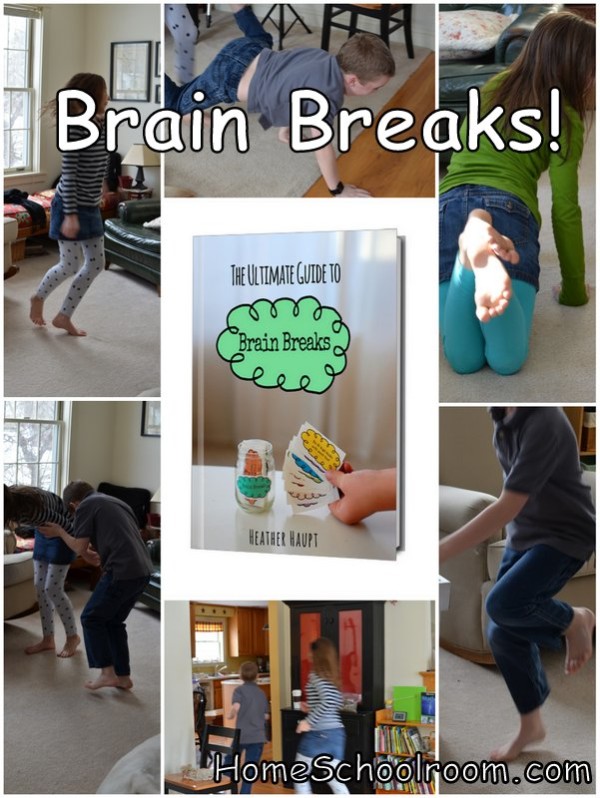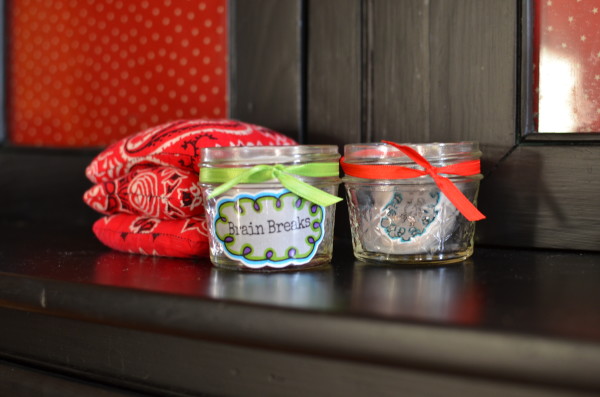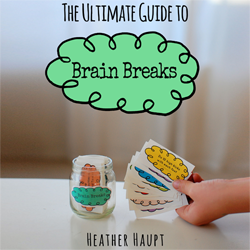Brain Breaks Boost Learning and Build Relationships
I remember early reading lessons with my son. At the beginning of the lesson he was completely capable, but the longer it went on the harder it became for him to focus or remember things he knew. He would slump over onto me, yawn and look around the room, and our lessons would become like a slog through thigh-high snow.
Most days, in task-master mode, I’d force him to buckle down so we could finish, promising him a break as soon as we were done. One day in desperation I told him to get up and do a few jumping jacks and it helped him refocus. After that I used the same tactic occasionally, but my personality usually just focused on getting the lesson DONE. I understood his need to be active but felt we should finish the lesson first, then go take a real “break.”

This post contains an affiliate link to a product that we regularly use and love (and need!) in our homeschool.
Enter a Valuable Teaching Tool: Brain Breaks
Then Heather at Cultivated Lives wrote about Brain Breaks, short bursts of controlled movements to be used during intense mental effort. She’s a mom of boys who’s in the trenches with me trying to get these active little guys to focus. Add in that she’s a self-proclaimed science nerd and I jumped at the chance to obtain a free review copy her book, Ultimate Guide to Brain Breaks. I devoured it in an afternoon and with great excitement prepared the printable Brain Break cards for our first week of school this year.
We used Brain Breaks our very first day and countless times over the course of this year. It’s not just my I’d-rather-build-a-robot-than-practice-reading son who benefits, but also my musical daughter who wishes all math curriculum would cease to exist.
There have been so many times over the course of this year that I’ve seen one of my children who is frustrated and even in tears grab a Brain Break card and within a couple minutes be laughing and ready to try again. Not only do they help refocus children who are not working at their best, but they change the whole mood of the moment.
I call for Brain Breaks when I recognize a lack of focus or negative emotions, and often my kids ask for a Brain Break because they can recognize the signs in themselves. Come to think of it, that’s actually a life skill and will help them be more productive even when they are older.
Brain Breaks can Break a Negative Pattern
I’m not exaggerating when I say Brain Breaks have helped us have overall far more pleasant days. Here is an all-too-typical pattern before:
I drag my son, who is flopping like wet spaghetti, through his one-on-one reading lesson. We finally finish and I send him off for a short break. By now I’m feeling a bit edgy. I check in with his sister, who made simple calculation errors in her math lesson because she wasn’t focused on math but was really thinking about the story she’s been writing. I get upset that it isn’t her best work, so soon she’s teary. Pretty soon I join the unhappy club and the mood of the whole house takes a nosedive. In typical type-A fashion I bulldoze through our next task. We check things off but the joy is lost.
These days I call for a Brain Break. I join in with the kids, because when they aren’t focused or working well I can get frustrated, too. A few minutes later we’re back on track, smiling and reconnected, breaking what used to be a vicious cycle for us. Brain Breaks not only help get their more focused work done, but they also build our family relationships in the process!
Do you really need the book to implement the idea of Brain Breaks?
If you’re like me you do!
- First of all Heather details the scientific facts. She shows the wisdom in taking breaks for movement when necessary. I tend to value checking things off my list above all and steamroll over the little people that get in my way. Realizing how much the Brain Breaks boost learning helped me prioritize them over plowing through the lesson. So even if it feels like taking a break is counter-productive I know more learning occurs if I implement them.
- Second of all the printable cards make it easy and provide a variety of ideas. When you need a Brain Break your brain is mush, so that isn’t the time to think of a fun or original way to move! That was one of the problems with my old system of “Hey, jump up and do a few jumping jacks.” It got boring and didn’t re-inject the fun into our learning. Besides providing a variety of ideas to prevent boredom, the movements are specifically chosen to stimulate the brain for learning, from blood-pumping whole body movement to imaginative dramatizations.
How We Use Brain Breaks in Our Home
I keep two small glass jars with the Brain Breaks cards. We grab a card from the “Go” jar (green ribbon) and after it’s used place it in the “Done” jar (red ribbon). That way we cycle through all the cards before repeating. The jars and a few bean bags (helpful for some of the Brain Breaks) sit near an open space in our house, ready to save the day!
This week we’ve been doing our yearly Standardized Testing, and what a difference Brain Breaks have made. During long exams I allow Brain Breaks and they’ve kept us laughing even while filling in bubbles!
Want to Try Brain Breaks in Your Homeschool?
Click on over to grab your copy of Heather’s Ultimate Guide to Brain Breaks today!


 Hi, I'm Heidi and I homeschool my two sweet kids. I want them to know that learning is an exciting lifelong adventure! We love great books, unit studies, notebooking, lapbooking, and hands-on learning.
Hi, I'm Heidi and I homeschool my two sweet kids. I want them to know that learning is an exciting lifelong adventure! We love great books, unit studies, notebooking, lapbooking, and hands-on learning.



